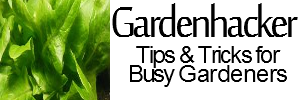We came back from a much needed vacation, and have not needed to water the garden. Weeding is another matter, at least around some of the beds, but no need for pumping water – it rained here at least as much as it did in Florida (which was hot, but worth it!). The strawberries yielded about three pints, minus about one pint that either rotted or were eaten by the slugs. Everything else – carrots excluded – has continued to grow at a good pace.
In the weeding arena, we’ll be clipping back more of the grass in the established strawberry plots, while the new plots are doing quite well without our help – the grass clippings have suppressed the weeds almost completely.
Comfrey was in need of clipping as well (a ten minute job) and has been added to the compost barrel (top cut from an old plastic barrel, set almost sideways for easier turning) and we may be able to create a “comfrey tea”.
There are two versions of comfrey tea that I know of: one is a smelly concoction where you fill a bucket with 1/2 comfrey leaves, then top off with water, adding a rock to hold them under for about twenty days. If you do this, keep the lid on it to keep the flies away, and so you don’t need to smell it.
The second method, if I can find it, is a more “aerobic” method in which you use an aerator (from a fish tank) to keep the oxygen in and the anaerobic creatures in check. Hoping this creates a less smelly concoction (update 2011-07-03 – yes, it’s not as smelly!).
To use, dilute the concoction in a 10:1 mixture (ten cups of water to one cup of strained smelly comfrey tea). Use the tea as a side dressing every ten to fourteen days, stopping at thirty days before harvest. This can be used as a foliar spray which is reported to slow the powdery mildew mold spore that is almost sure to be a problem in the northeast. Spray every 10-14 days, stopping thirty days before harvest. DO NOT use comfrey on established lettuce or spinach, as the rich nitrogen content may cause it to bolt. Use care with carrots, too, as too much nitrogen can cause cracking and forked carrots.
Comfrey has a good amount of N P K, as well as other micronutrients that plants love, and slugs will eat and crawl away with – so if you are just using the leaves and stalks, burying them instead of just leaving them on the ground.









[…] mentioned in an earlier post, I was looking for and found my “bubbler” from the old tank, complete with the hose and […]